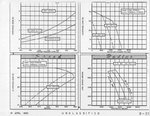Hello,
According to this link: distance Berlin to newfoundland - Evi
The distance between the island of Newfondland (Canada) and Berlin is 4720 km or approximately 2548 nm.
According to Wikipedia article about the B-29: Boeing B-29 Superfortress - Wikipedia, the free encyclopedia
The aircraft's combat range is as follows:
Therefore approximately 300 nm more than the distance I provided of Newfondland to Berlin.
I don't to discuss an alternative history scenario with all the subtopics related, just was wondering if the B-29 could really fly bombing missions with a decent payload (maybe a dubious claim, feel free to interpret) against Germany from Newfoundland.
Thanks since now for the attention,
Marcelo jenisch
According to this link: distance Berlin to newfoundland - Evi
The distance between the island of Newfondland (Canada) and Berlin is 4720 km or approximately 2548 nm.
According to Wikipedia article about the B-29: Boeing B-29 Superfortress - Wikipedia, the free encyclopedia
The aircraft's combat range is as follows:
Combat range: 3,250 mi (2,820 nmi, 5,230 km)
Therefore approximately 300 nm more than the distance I provided of Newfondland to Berlin.
I don't to discuss an alternative history scenario with all the subtopics related, just was wondering if the B-29 could really fly bombing missions with a decent payload (maybe a dubious claim, feel free to interpret) against Germany from Newfoundland.
Thanks since now for the attention,
Marcelo jenisch
Last edited:

